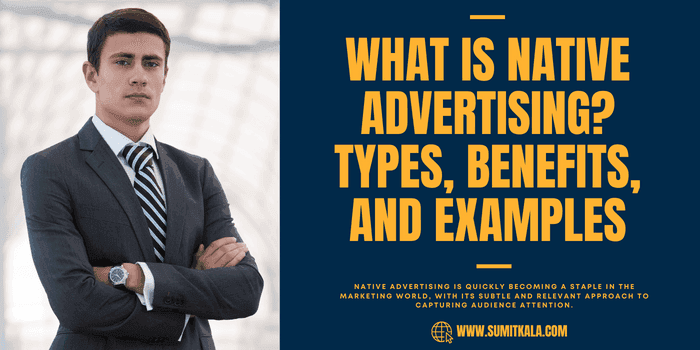
What Is Native Advertising? Types, Benefits, and Examples

Native advertising is quickly becoming a staple in the marketing world, with its subtle and relevant approach to capturing audience attention. In this guide, we'll deep-dive into native advertising, its types, benefits, examples, and more.
What is Native Advertising?
Native advertising is a form of paid media where the ad experience follows the natural form and function of the platform on which it is placed. Unlike traditional display ads, which stand out as commercials, native ads blend seamlessly with the platform's content, making them less intrusive to the audience.
Types of Native Advertising
In-Feed Units: These appear in social media feeds or as regular website articles. They look and feel like standard content but are labeled "sponsored" or "promoted."
Search & Promoted Listings: These ads appear at the top of search results or in product listings on eCommerce sites.
Content Recommendations: Found at the bottom of articles, they recommend additional content the reader might like.
Branded Content: This is where a brand collaborates with a publisher to produce content, like a video or article, that's inherently valuable to the audience.
Benefits of Native Advertising
Less Intrusive: They don't disrupt the user experience.
Better Engagement: Users are more likely to engage with them as they blend in.
Avoids Ad Blindness: Unlike banner ads, which are often ignored, native ads command more attention.
Higher Conversion Rates: Due to their non-pushy approach, they often yield better conversions.
How to Create Native Ads
Know Your Audience: Understand their preferences and browsing habits.
Choose the Right Platform: Opt for platforms that your target audience frequents.
Content is King: Ensure the content is relevant, engaging, and adds value.
Design Matters: The design should align with the platform while standing out subtly.
A/B Testing: Test different versions to see which resonates most with your audience.
Native Advertising Examples
BuzzFeed Sponsored Posts: Brands collaborate with BuzzFeed to create fun and engaging content.
Airbnb and The New York Times: Airbnb sponsored an article about living in different cities, subtly promoting their listings.
Instagram Sponsored Posts: Brands showcase their products through organic-looking photos on Instagram.
Best Practices for Native Advertising in Ecommerce
Relevance is Key: Ensure your content is highly relevant to the platform and audience.
Maintain Transparency: Always label your ads as "sponsored" or "promoted" to maintain trust.
Use High-Quality Imagery: Crisp and clear images can increase engagement rates.
A/B Test Regularly: This helps in refining your strategy for better results.
How Do You Spot Native Advertising?
Native ads are designed to blend in, but here are some tips:
Look for labels like "sponsored," "promoted," or "advertisement".
Check if the content directs you to a product or service.
Note the tone and style. If it feels promotional, it's likely an ad.
Native Advertising FAQ
Is native advertising ethical?
Yes, as long as there is transparency about the content being paid for.
How do native ads differ from display ads?
Native ads blend in with the platform's content, whereas display ads stand out.
Do native ads cost more?
Pricing varies, but due to their effectiveness, they might have higher costs per placement.
In conclusion, native advertising offers brands a more organic way to reach audiences. When done right, they can significantly boost engagement and conversions. Ensure the content is relevant, valuable, and transparently marked as promoted to maintain trust and efficacy.
Appreciate the creator